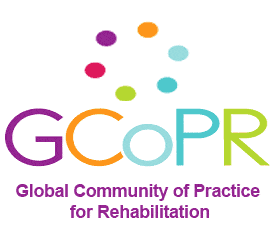Friday 3rd December 2010 was the
International Day of Disabled Persons.
The annual observance of this day aims to increase awareness and understanding of disability issues and trends and to mobilise support for practical action at all levels by, with and for persons with disabilities. In support of this day the GCoPR asked 3 questions of its members in order to gain a brief insight into the type of work they undertake and to identify areas of both commonality and also diversity. Below is a brief summary of the postings made.
Question 1 asked who are the patients commonly seen by community and mobile rehab teams. From the many contributions received it is clear that people are presenting with a wide range of complex pathologies with some members drawing attention to an increase in the number of diabetic related foot problems – possibly as a result of a general increase in longevity. In addition, postings from the Eastern Mediterranean, Africa and South East Asia did reflect a high prevalence of disability as a result of RTAs combined, in many cases, by delayed referral to the appropriate community and mobile rehabilitation services.
On a day which was designed to celebrate individuality and diversity, Dr Kroll from the University of Dundee reminded us that people should not be viewed as the sum of their medical conditions and who need to be “fixed”, it is more important that we work towards breaking down the barriers in society which fail to take account of and include people regardless of their individual differences as defined by their disabilities.
Question 2 asked what were the biggest challenges faced by community and mobile rehab services and how they might be overcome and responses to this question showed a variance across the different global regions.
Within the developed world the main challenge would seem to be gaining access to funding to provide support/aids that could improve people’s quality of life. This was further exacerbated by people’s level of expectation (both that of the individual and their family) as to what could actually be provided. This was especially the case in patients with dementia and those with complex medical needs.
Within the developing world the emphasis focused on the difficulties people face in actually accessing rehabilitation services and also effective follow-up and review once they have returned home and the lack of mobile rehab teams. This was mainly due to issues such as language barriers, the large distances involved and in the case of children, lack of parental understanding in terms of early intervention. One contributor highlighted the challenges of working with “people in situations of multiple vulnerability” such as women with disabilities or those living in high-conflict areas. Systemic failures also caused difficulties as late referrals could result in ineffective rehabilitation, thereby leaving people with significant functional limitations, making long-term independence within their community more unlikely.
Question 3 looked at some success stories in returning patients to their community after rehabilitation and so responses focused on ways of ensuring people could return home with a level of independence that allowed them to interact with family, have purpose within their lives and perhaps most importantly be accepted by their community.
In areas where there are problems with access to effective rehabilitation, in particular post conflict, then it becomes difficult and at times impossible to achieve this. In particular community based rehabilitation can be neglected in developing countries. And so we should aim to give health professionals a better understanding of the impact of their work and also to increase their learning of Community Based Rehabilitation (CBR) and mobile rehab service. For such a service to be successful, it must reinforce the locally appropriate services which are already in place. It is also important that we continue to increase people’s understanding of how rehabilitation can help those who are chronically disabled as a consequence of conditions such as HIV/aids, Buruli ulcers and complications from childbirth.
One particular story from Dr Bundoc in the Philippines outlines the success of the Walking Free Philippines, an affiliate of Physicians for Peace Philippines programme, in improving awareness of, and access to, rehabilitation services within rural and poverty stricken areas. This community-based service has also tied up with SMART communications which allows referral through text/ picture/ internet messaging so that online feedback, assessment or advice can be given, thereby preventing a lengthy journey to the nearest rehabilitation centre or conversely, allowing appropriate planning for a field mission.
Over the course of the day we had over 40 contributions from 14 different countries, spanning 10 Allied Health professions, in addition to physicians and academics. Each of the 6 WHO regions was represented within the countries who responded.
To view the discussions in full please visit the GCoPR website at:-
http://my.ibpinitiative.org/public/rehabilitation
The GCoPR has over 1200 members, in 68 countries and represents 24 allied health professions.
Other useful websites:-
Physicians for Peace – http://physiciansforpeace.org/
Physicians for Peace Philippines – http://physiciansforpeaceph.org/
Rehabilitation and Participation in Long-term Conditions (Conference) –
http://www.sdhi.ac.uk/Plannedconferences.htm


